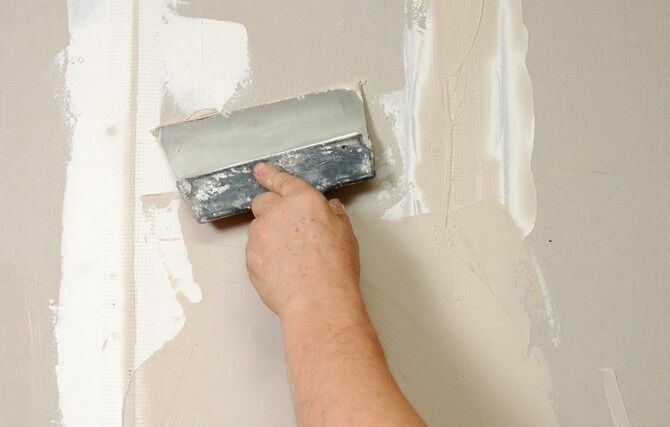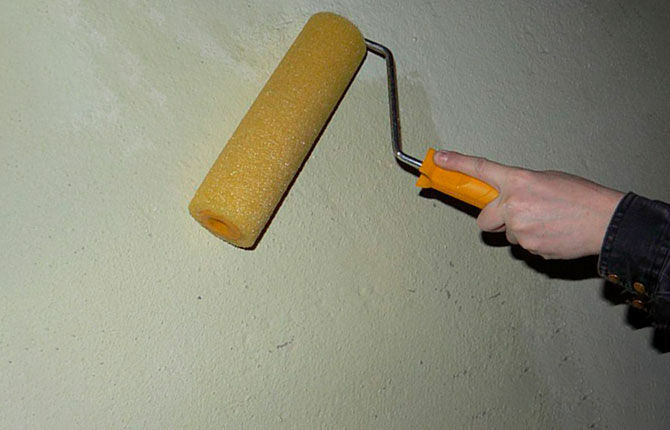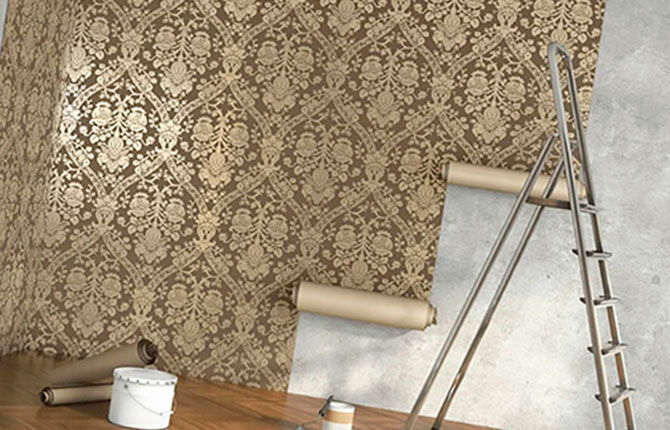At first glance, there is nothing special about sticking trellises on the walls. In theory, the process can be mastered by any neat person. In fact, pasting often causes difficulties even for those who have pasted them more than once or twice.
Problems arise at the stage when it is required to glue the wallpaper in the corners. In this case, patience and accuracy alone is not enough. You need to know exactly how to glue the panel in the corner area.
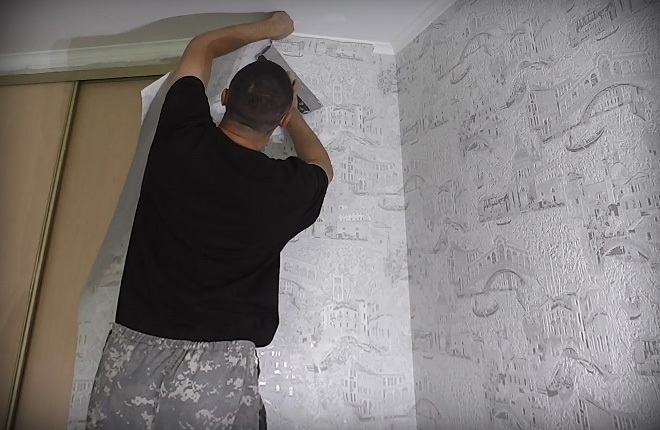
The content of the article:
-
Difficulties and features
- Features of working with a drawing
- Combination features
-
We prepare the surface
- Refinement of external corner surfaces and slopes
- Preparation of internal corners
- Align the surface of the walls in the corner
-
Glue the outer corner
- How to wallpaper on an outside corner with one uneven wall
-
Glue the inner corner
- How to glue wallpaper on an internal sharp corner
- Wallpapering with a wide angle line
Difficulties and features
There are no trifles in gluing - you need to take into account the quality of the canvas, its weight, width and the ability of the material to stretch on a not quite even surface of the walls. But it is the walls that cause the greatest number of problems.
Sticking wallpaper in the corners is no more difficult than on the walls, but you need to take into account:
- Wall quality. It may be necessary to install a profile made of perforated plastic (or aluminum) on the outer corner in order to form an ideal interface line for 2 walls.
- The number of wallpaper strips and the actual width of the wall from corner to corner. It is necessary to calculate the number of rolls so that the edge of the last panel does not lie directly in (on) the corner. At a minimum, the canvas should either go to the second wall, or at least 20 cm should remain from the edge to the interface line. In such a situation, butt-gluing the edges will not work, and a small overlap will look ugly.
- How to customize the pattern on the corner. Sticking wallpaper is easier if there are no ornate patterns. Otherwise, you will need to select a pair of panels according to the drawing for each corner.
Generally paste wallpaper it is not difficult if you select pairs for gluing on the corners in advance, choose the right starting point and the direction of laying new strips.
Usually, gluing the panels starts from the window in the direction of the front doors. It is believed that in this case the edge overlap will be invisible due to the fact that the light flow will be directed in the direction of the sticker line. In fact, you need to take into account not only daylight, but also indoor lighting. At least the most powerful source is a chandelier or wall lighting.
In addition, you need to take into account the direction of lighting at the corners, and the edge of which of the 2 panels to glue on the outer corner from above. It depends on whether the end of the wallpaper will be visible or not.
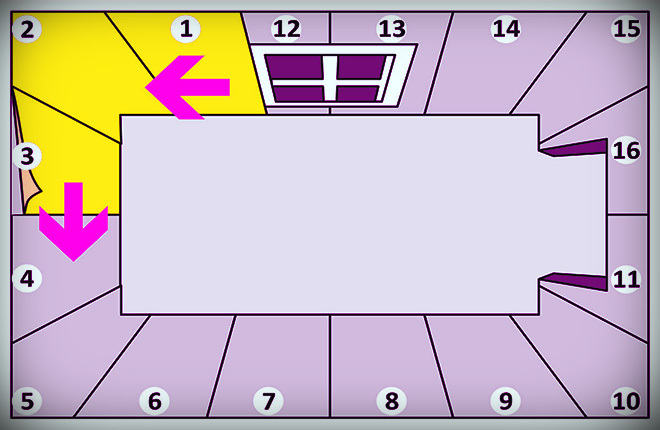
If you plan to glue the tapestries on the ceiling, then you need to mark the prepared surface with a pencil in the form of parallel lines. Without guidelines, it will be difficult to glue the wallpaper so that they are parallel to the window opening.
But the worst thing is that unevenly laid ceiling trellises will go to the corner line between the wall and ceiling in different ways. Therefore, you will have to run the wallpaper from the ceiling to the wall, and close the defect with further gluing with a decorative edging or installing ceiling plinths.
Features of working with a drawing
If the walls are lined with gypsum boards or any other facing material with a perfectly flat surface, then wallpaper strips can be glued directly with an overlap along the corner line or with a slight overlap on next wall. It will be enough to glue with an overlap of up to 20 mm.
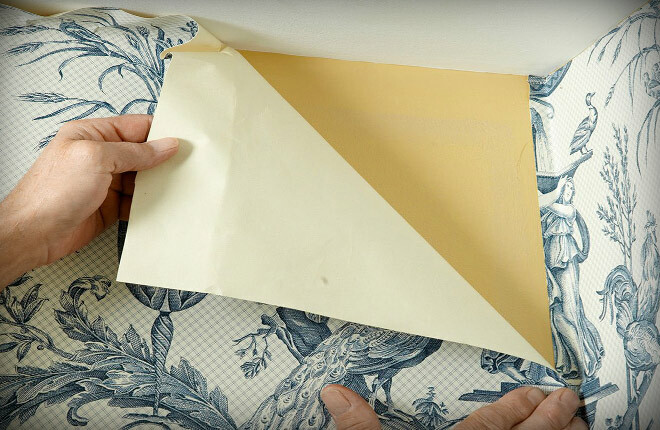
But this situation rarely happens. Usually the walls are poorly aligned with plaster, so the corner line is uneven. The drawing on the first corner from the window opening can not be picked up, but a whole panel can be pasted. The width from the window slope to the first corner is usually no more than 30-35 cm. Therefore, you can glue the full canvas, if the supply of wallpaper allows.
The part of the wall near the window is usually considered blind. Due to the fact that daylight through the window blinds the eyes, plus a cornice with curtains is always placed above the window opening. Therefore, the selection of a pattern in this corner is transferred to the final stage, when all the most important corner zones have been glued.
Often, when choosing a pattern, one of the panels has to be cut lengthwise, and from these scraps you can glue one blind corner (usually the right one, if you look at the window).
Combination features
The wallpapering process moves quickly. As soon as the corner zone approaches, you need to combine, otherwise it will be difficult to combine the pattern.
Approximately at a distance of 20-25 cm to the corner, stop work. The next panel of wallpaper for gluing (then another one) will have to be selected so that it fits in the pattern with those previously pasted on the wall.
A new piece of wallpaper (transitional) can be measured and then cut off in length so that it is smaller in width, and the edge of the panel "went" through the corner line onto the adjacent wall by no more than 5 cm. Glue the next piece of wallpaper straight from the corner. This is the most common pattern for wallpapering both inside and outside corners. It makes it possible to simply pick up a pattern on adjacent panels.

The second method of gluing assumes that the transitional piece of wallpaper is not cut to length, but is glued in full width. In this case, an edge up to 20 cm wide can enter the adjacent wall. The edge is uneven, so the next strip of wallpaper has to be selected according to the pattern, cut and glued end-to-end. This method is mainly used on internal corners with curved walls.
Specific how to hang wallpaper is chosen according to the blind surface rule. The piece of cloth that is more darkened is cut. It is recommended to glue the front, well-lit part of the walls in whole strips with a careful selection of the pattern.
We prepare the surface
The better the surface quality of the walls, the easier it is to paste the wallpaper. The same goes for the ceiling. It is best to glue the wallpaper on the ceiling part, wrap and glue the edges of the panels, laid over the corner line on the wall. Only after that it will become clear from what height the walls can be glued.
On the ceiling, the transition in the corner is made by a maximum of 3-4 cm, if it is in good condition. If the house is old, then perhaps it is better to refuse wallpapering in the corners, covering the line with a wide edging.
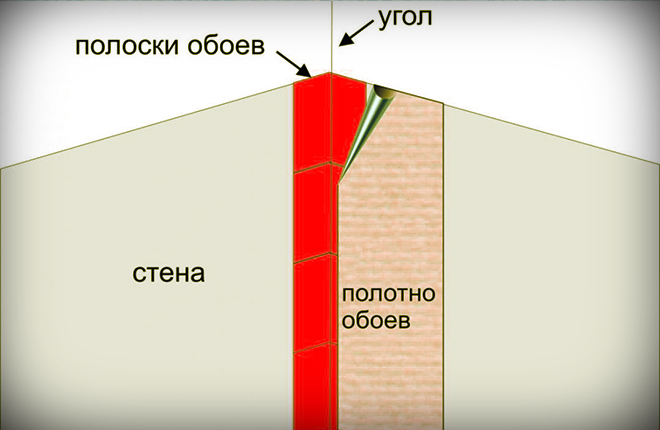
Refinement of external corner surfaces and slopes
Preparation begins with the removal of the old coating and puttying the chips and damage to the plaster on the wall. Cracks can be lightly tapped to make sure the plaster is firmly in place. If there are no delaminations of the plaster layer, then the defects are rubbed with a liquid finishing putty.
Large chips are first rubbed with finishing putty. It is necessary to lay a small layer, only to strengthen the material of the walls. Most of the chip is filled with starting putty. In this case, it is necessary to level the repaired surface with a spatula so that it is in the same plane with the wall. After the putty has dried, rub the residue with a hand grater with sandpaper.
Often the condition of the outer corner is poor, there are many chips, and even part of the plaster may be lost. Sticking wallpaper on it means that after a while holes will appear in the panel. Therefore, a repair overlay profile is glued onto the putty over the corner. This is a soft profile made of perforated aluminum or polystyrene tape.
After 10-13 hours, the surfaces of the walls adjacent to the repaired line are puttied, leveled, and after a day they are rubbed with a hand grater or paint mesh-emery. The result is a relatively flat and smooth surface that absorbs adhesive well.
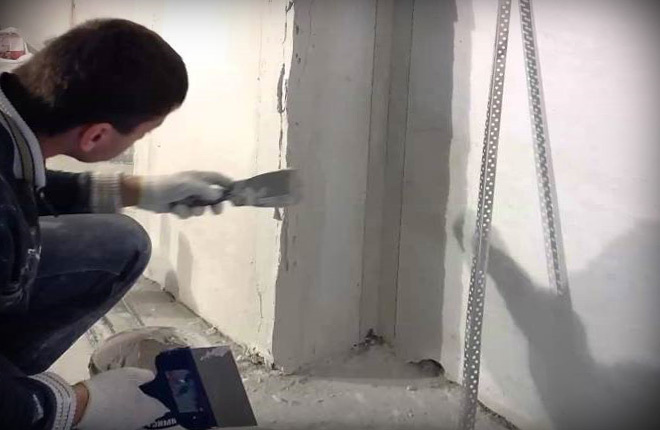
Preparation of internal corners
First you need to clean the adjacent surfaces of the corner from the remnants of glue and old wallpaper. In half the cases, especially in older apartments, the line of the inner corner is uneven.
The middle can be even, but the segments adjacent to the ceiling and to the floor always have an arc. This is a specific defect in plastering with a clean cement-sand mixture.
Align the surface of the walls in the corner
If everything is too crooked and uneven, then a small layer of plaster at the bottom of the walls can be removed with a grater board, on which coarse-grained emery cloth is pasted. You need to rub in several passes, gradually aligning the line of the corner. For control, you can use a plumb line and a plaster rule 1.2-1.5 m long.
It is impossible to align the walls with another tool. A spatula or even a wooden scraper leaves deep marks and removes material unevenly. If you stick the wallpaper, then the "humps" and "waves" on the surface of the walls will immediately become visible.
After leveling, the wall should be puttied with a finishing gypsum mixture. A day later, you can once again go through the vertical line of the corner with the help of a rectangular wooden block, on which a plaster grinding mesh is glued. On such a surface, you can glue any wallpaper, even non-woven. Due to the high porosity of the putty, the adhesive layer will hold better than on the rest of the wall plane.
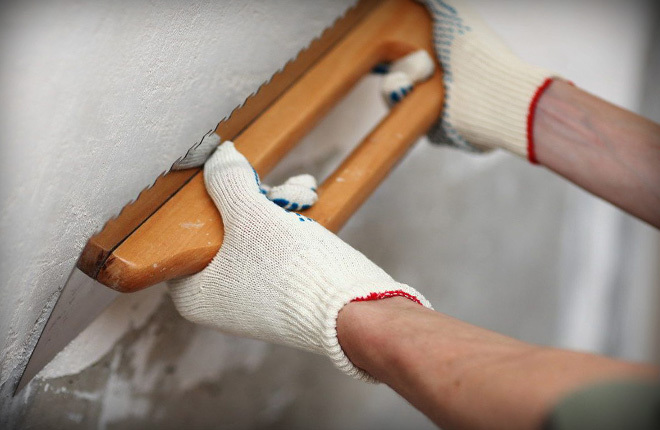
If it is not possible to apply gypsum putty to the wall in the corner, then you can stick strips of newsprint using the old method.
Glue the outer corner
In most cases, one of the walls adjacent to the corner is better lit and visible. The second always remains in the shadows or is located so that they pay less attention to it. In this case, the process of gluing the panel begins with the "front" wall, go around the corner and lay the edge of the wallpaper on the mating surface.
In rare cases, the walls on the outer corner can be almost equivalent, for example, when moving from the hallway to the corridor of the apartment. In this case, you need to glue the wallpaper, starting from a more “status” room.
How to wallpaper on an outside corner with one uneven wall
This is the most common situation. The gluing process begins with measuring the areas on which the canvas will lie. It happens that the corner line has been aligned, but the plane of one of the walls is still different from the vertical. Therefore, the outer corner, despite the fact that visually it looks straight and strictly vertical, is actually inclined at 5-7O to the vertical.
If you simply paste wallpaper from one wall to another, then one edge of the canvas (starting) will be aligned with the line of the previously pasted piece of wallpaper and will look even. The opposite edge of the wallpaper after pasting on the wall will be tilted.
How to glue a protruding corner with wallpaper:
- We measure with a tape measure the distance from the edge of the previously glued piece of wallpaper at 3 points - the upper, middle and lower parts to the next trellis laying line. Based on the results, we choose the average value. This will be the width of the blank for gluing.
- Cut out a piece of wallpaper of the desired width and height.
- To remove dust, wipe the walls with a slightly dampened sponge.
- We apply glue with a roller on the wall and on the back of the piece. Before gluing, we maintain a short pause in order for the adhesive mass to be absorbed.
- We take out the panel on the wall, apply the edge to the edge of the previously glued piece and lightly press it to the surface along the entire height. We level the edge in the upper part and then you need to glue the canvas to the wall towards the corner and beyond.
Even if you glue the protruding corner with wallpaper as carefully as possible, align and smooth it all the same, the opposite edge of the newly pasted piece will be slightly tilted.

To correct the situation, you need to find the middle on the edge, about half of its height. Next, using a long ruler and a level, we draw a vertical line through the point (preferably with a simple pencil).
Along this line, you will need to glue the next strip of wallpaper. Part of it will overlap, part will have to go under the edge of the corner canvas. After gluing, you need to use a meter-long locksmith ruler (steel) and a wallpaper knife to make a cut along the marking line from ceiling to floor. Then straighten and smooth the edges.
As a result, it was possible to paste wallpaper on the problematic outer corner and at the same time eliminate the resulting slope.
Glue the inner corner
The angular internal line, even after careful preparation of the walls for wallpapering, turns out to be either sharp or wide. That is, in the first case, the corner looks like it was cut with a knife, in the second case, they additionally passed along the interface line with a thin brush.
How to glue wallpaper on an internal sharp corner
The gluing process is simpler than in the case of an external corner. A sharp line is usually obtained after wall cladding with drywall or overhaul with modern plaster materials using corner profiles. Therefore, the line is straight.
First you need to apply a layer of glue to the wall. For the corner zone, this must be done without fail; on the rest of the part, you can not primer. Modern wallpaper glue perfectly penetrates even into concrete.
Next, we coat the panel and lay it on the wall so that the front edge passes through the corner line to the adjacent surface by at least 10-15 mm. You can do more, but everything that has moved to the adjacent wall will still be cut off, so it's better to do it earlier. On top of the glued material, you need to pass the back of the plastic stroked to besiege it deeper.
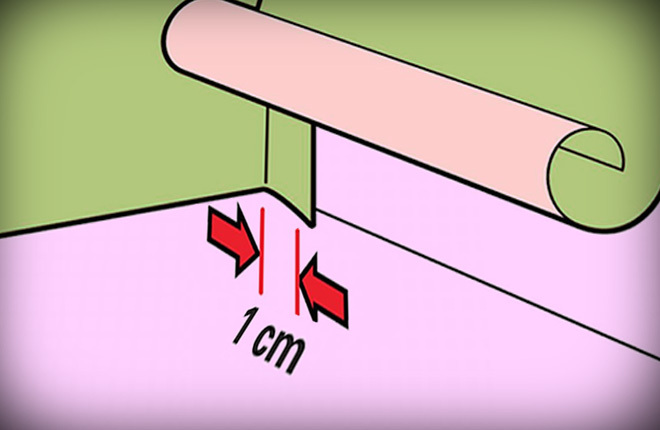
If you want to glue paper, relatively thin and soft wallpaper, then just cut off the new cloth, coat it with glue and lay it on the wall so that the right edge fits snugly and lies down to the line. It remains to smooth the canvas and squeeze out the remaining glue. This gluing technique is established by the old instructions and SNiP.
But for modern multilayer wallpaper with non-woven or vinyl backing this method is not used. If glued with an overlap, then due to the large thickness of the material, the seams will be clearly visible and the overlap will stick out under the joint line.
Therefore, for non-woven dense tapestries, the gluing procedure is different:
- We paste the canvas with the transition through the corner, the size of the inversion is 10-15 mm.
- Using a plastic spatula and a knife, we cut off the inversion, no more than 2 mm remains.
- On the mating wall, we paste the canvas so that the left edge of the wallpaper fits tightly into the corner. It also needs to be cut, but with a metal spatula.
As a result, the docking line coincides with the corner. Visually, seams or joints will not be visible. Before gluing, it is advisable to blow dust off the interface line of 2 walls, smear it well with glue using a thin brush. After 5-10 min. remove excess glue with a sponge. After drying, the glue will attract the material of the trellis, and the angular line will remain sharp.
Wallpapering with a wide angle line
The presence of a fillet along the junction line of 2 surfaces indicates that the walls in the room were plastered in the old ways, or the building has problems with cracks and settlement.
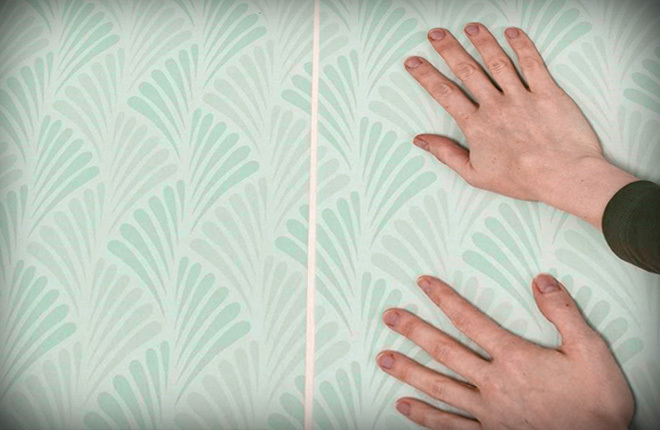
The wall surface on which the trellis is planned to be glued can be quite even and flat. That is, the presence of old plaster does not mean a uniquely crooked base. But the joint along the entire length of the inner corner could be repeatedly repaired. Therefore, the line in problem areas will always be wide.
Pasting technology is about the same as with a sharp joint line. The only difference is that after laying the second canvas on the mating wall, you need to slightly pull the canvas towards the corner line. After the glue dries, the wallpaper material will adhere tightly to the fillet surface.
It is not difficult to glue wallpaper in the corners with your own hands, you just need to choose the right pattern and prepare the base, putty cracks and potholes, if necessary, prime the walls. You can even practice on a small trim of old wallpaper to make sure that the chosen method is correct.
Tell us about your experience with wallpapering - what do you think is the best way to paste wallpaper faster and easier? Save the article to your bookmarks so that it is at hand if the need arises to re-read it.
